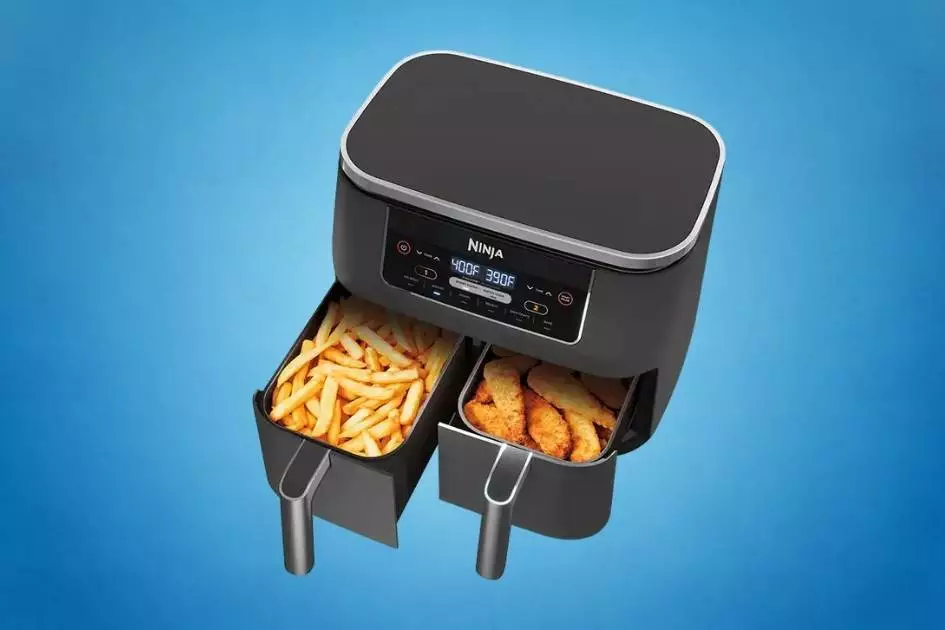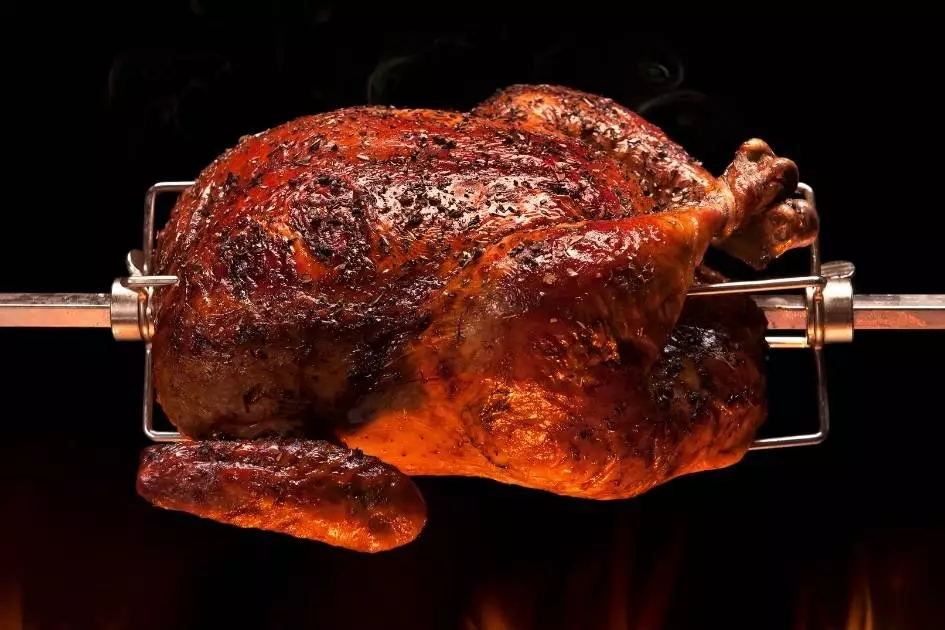A fire in the house is the biggest nightmare for many people. It can have dire consequences, both for the house itself and the residents. A contents insurance covers fortunately the damage, personal injury but of course never to be underestimated. The most common kitchen fires start during deep frying. A frying fire is caused by the fat or oil in the pan overheating and then catching fire. Fortunately, this often fizzles out, but it can of course be very dangerous if you are not around. But what about an electrical fryer? Is this less flammable than the traditional stovetop frying or does this make no difference?
Most of the time, an airfryer is much more safer than than usual way of frying with oil. This is mainly because nearly no fat or oil is used in the airfryer. In addition, electrical fryers stop working when the time reaches the set time. This ensures that the pan does not overheat.
Frying Methods and Their Impacts
Stovetop Frying
Deep Frying
In general, we can say that deep frying is more dangerous than the others. You can just think on the direct proportion between the danger and amount of hot fat. Since oil is a great conductor of heat as much as it's risky and tasty, food is fully submerged in the oil from bottom to top. The oil temperature ranges around 350° F. That does not only pose a fire hazard threat. It can also cause to be unnecessarily hurt. This makes an electrical fryer, mostly an airfryer, safer to use and it is also a lot healthier. In short: win-win in every situation!
Water is the most threatening substance in frying. You should avoid water contact with hot oil directly or indirectly. If the food is still soaked, you'd accidentally end up with splashing or flames. When water gets into touch with hot oil, since it is more dense than oil but boils at lower temperature, it expands very fast which may cause oil to splatter around and over you, which we wish never happens.
Well, to sum up, there are basically two reasons why you have to dry food very well before frying. First, so that the oil does not jump when it comes into contact with the water; second, because when they are wet, they will have excess moisture and it will be more difficult for the crunchy crust to form.
Shallow Frying
Shallow frying is safer compared to deep frying. It is a culinary technique that involves cooking in oil, usually in a pan. It is generally used to cook small pieces of meat or fish that are generally covered in flour, or some type of batter. Flat patties such as potato pancakes are also shallow fried in cooking oil. The oil is usually heated to a medium-high temperature to promote quick cooking and browning. Shallow frying requires skill and attention to ensure the dish will be crisp and juicy, but not greasy.
In shallow frying, the pot is filled half or two-thirds of the way with oil so that the food is only partially submerged. It will need to be turned to ensure both sides of the item are evenly cooked. The presentation side of the food should be dipped first, as this is the part that gets the most browning. The browning of food is called a Maillard reaction in cooking terms.
Frying With an Electric Appliance
Deep Fryer
An electric deep fryer is equipped with a thermostat. Such a thermostat ensures that the temperature remains at the set value. In addition, these devices are usually equipped with an extra overheating protection. This interrupts the power if the temperature rises too high, for example because the thermostat is not working properly. Due to such a double protection, the chance of flame in the pan is very small. Therefore a deep fryer is the most reliable choice in terms of safe frying.
Air Fryer
In addition to the safety gains of a deep fryer, in an air fryer you do not fry in oil, but in hot air. Depending on your dish, just from a few drops to one tablespoon oil is fairly enough. That makes a big difference in the amount of fat, and the result is decent. An additional advantage is that the risk of accidents is smaller and your house does not smell like a chip shop for two days.
DID YOU KNOW?
Airfryers aren't there only to simulate deep-frying. An airfryer can be used for many more different purposes. With the multi-cooking functionality, it can grill, roast and bake in its same own. Also capable to reheat, dehydrate, and toast. This also serves as an excellent replacement for the traditional oven.
An airfryer is truly a small but mighty kitchen appliance and with the help of this device you even protect your belongings against the risk of fire.
What is the Working Principle of Airfryers?
Those who are not yet familiar with the airfryer, we would like to explain it one more time. Because how can an airfryer fry, if it does not use any oil?
The word actually says it all. The airfryer uses hot air and blows it down and up through the food. Almost comparable to the oven. This can be the right choice to bake traditional snacks and fries, but also to prepare dishes or cook other types of vegetables like cauliflower, pepper, broccoli, and brussels sprouts. However, not all foods will have an equally crispy texture. When you buy snacks that are specially designed for the airfryer, this will almost always result in a crispy crust. However, if you are going to prepare vegetables in the airfryer, you hold them inside for a less amount of time since they get ready earlier as of their soft and thin structure. You can see this situation in peppers, asparagus and courgettes, for instance.

An airfryer can actually do everything a traditional deep fryer can do, but in a different way. This means you will not have greasy fingers when eating your favorite snacks or fries and it is also a bit healthier. In addition, the airfryer can also be used for many other things. For example, for preparing steak or grilling fish. You'll meet plenty of options, when you get into it. An airfryer lets you fry more safely, enjoy a multifunctional device and various health benefits.
Safety Tips During Frying
What to do in case of a Frying Fire?
When a frying fire starts, you should always switch off the heat source first, in this case unplug the fryer from the socket. Is the fryer under a range hood? Then switch on the range hood, so that the flames of the frying fire do not spread to the extractor hood. If you're cooking on the stove, cut off the gas or electricity by turning the valve as it stops or turning off the switch on your fuse box.
Extinguishing a frying fire requires a different approach than fighting a fire on, for example, wood, fabric or textile. A frying fire can best be fought by means of a fat fire extinguisher. The grease fire extinguisher itself contains instructions on how to use the grease fire extinguisher. The temperature of a frying fire must drop quickly to prevent further spread of the fire. By extinguishing the frying fire with the fire extinguisher, the surface of the fat in the fryer is covered with a layer of foam. As a result, no new oxygen is added and the fire cannot spread further.
Let the deep fryer or frying pan stand for an hour after extinguishing the fryer fire, so that the fryer/pan can cool down completely. It is also advisable to have a grease fire extinguisher in the immediate vicinity of the deep fryer or the stove.
Conclusion
Frying is a more traditional technique and relates to popular kitchen practices, but as our knowledge and technology evolve, hopefully other options can offer humanity safer ways of cooking even with minimal fat. Despite the truth that it is not exactly the healthiest cooking method, it is difficult to resist a craving of golden and crispy fried taste. Besides, airfryer is a recent invention that the company Philips presented for the first time to the public at the Internationale Funkausstellung (IFA) technology fair in Berlin in 2010. Honestly, as it's not very likely to exactly have the same deep-fried experience, some airfryers can mimic deep frying almost incomparably.
If you are not able to replace the well-known crispy deep-fried taste, rather than deep frying in a frying pan on the stove, it'd be a good idea to prefer a deep fryer appliance regarding safety, since they are smart devices to prevent fire incidents at home. On top of that, you can give airfryer a try as a more healthier and comfortable alternative. We take a detailed look in the airfryers article for you.


